Phobos—the son of Ares, the god of war—was the ancient Greek deity of fear and panic. Along with his brother Deimos, who represented terror and dread, he often accompanied his father into battle. Soldiers even adorned their armor and weapons with Phobos’ image to intimidate their foes. Indeed, his depictions were chilling: he possessed a lion’s head that gazed backward, eyes ablaze with fire, and a gaping mouth “full of teeth in a white row, fearful and daunting”…
The word phobia, meaning “intense fear,” originates from Phobos’ name. Given this strong Greek connection, it’s no surprise that the first recorded instances of phobias can be traced back to Ancient Greek literature, particularly the works of Hippocrates (or at least the Hippocratic Corpus), often called the father of medicine. It is with him that our story begins.
An ancient aulophobe (and his associate, the acrophobe)
The Hippocratic Corpus is a collection of about 60 early medical works attributed to Hippocrates. The Fifth Book of Epidemics—unlike the first and the third one—was probably not written by the renowned Greek physician, but by someone else writing in his spirit, possibly during his lifetime. Either way, the book holds what is often described as perhaps the earliest documented description of a specific phobia. In the words of the text,
Nicanor’s affection, when he went to a drinking party, was fear of the flute girl. Whenever he heard the voice of the flute begin to play at a symposium, masses of terrors rose up. He said that he could hardly bear it when it was night. but if he heard it in the daytime he was not affected. Such symptoms persisted over a long period of time.
There is a widely circulated internet misconception—which also found its way into the introductory pages of Facts on File’s unreliable Encyclopedia of Phobias, Fears, and Anxieties—suggesting that Nicanor also harbored a fear of heights. This is, however, inaccurate. It was actually his friend Democles who “seemed blind and powerless of body, and could not go along a cliff, nor on to a bridge to cross a ditch of the least depth, but he could go through the ditch itself.” Just like Nicanor, the text says, Democles too couldn’t get over his condition.
Hippocrates—or the author of Epidemics V, whoever they may be—offers no diagnosis in either case. Later writers, however, endeavored to fill that diagnostic void. As Helen King meticulously elucidates in her paper “Fear of Flute Girls, Fear of Falling,” the predominant retrodiagnosis for Nicanor and Democles, spanning from the Renaissance to the nineteenth century, was “melancholy.” Subsequently, from the nineteenth century to the present, the widely accepted diagnosis has been “phobia”—an irrational fear of specific objects, situations, or activities that entail minimal or no actual threat.
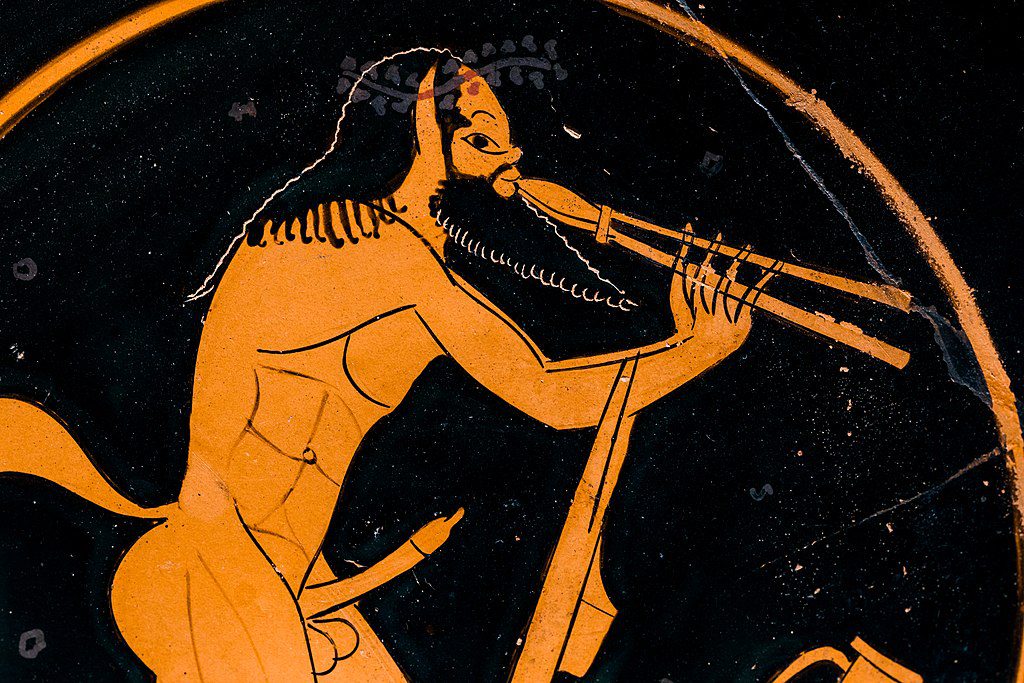
That said, Democles’ phobia—the fear of heights, or acrophobia—is one of the most universal and common phobias, akin to the fear of spiders (arachnophobia) or open spaces (agoraphobia). In stark contrast, Nicanor’s fear of flutes, or aulophobia, is an exceedingly rare phobia, and quite peculiar too, making for a compelling segue into our motley give-or-take-a-few-letters A to Z encyclopedia of weird phobias (which, to immediately acknowledge our sources, owes its inspiration to several enjoyable—if not entirely accurate—works, primarily Andrew Thompson’s Spiders, Clowns, and Great Mole Rats, Sara Latta’s Scared Stiff, and Gregory P. Korgeski’s The Complete Idiot’s Guide to Phobias).
A comprehensive A-Z guide to the world’s weirdest phobias
Entering the whirlpool: death by water
The term “phobia” may have found its earliest usage in the context of morbid fears with hydrophobia (more commonly known as aquaphobia today), describing an extreme fear of water. The terminology is credited to the Roman physician Celsus, who lived during the 2nd century and who used the word to characterize individuals who, despite their extreme thirst, exhibited an irrational repulsion toward water as a result of the effects of rabies.
“There is just one remedy,” Celsus wrote, “to throw the patient unawares into a water tank which he has not seen beforehand. If he cannot swim, let him sink under and drink, then lift him out; if he can swim, push him under at intervals so that he drinks his fill of water even against his will; for so his thirst and dread of water are removed at the same time.”
A is for ablutophobia (fear of bathing)
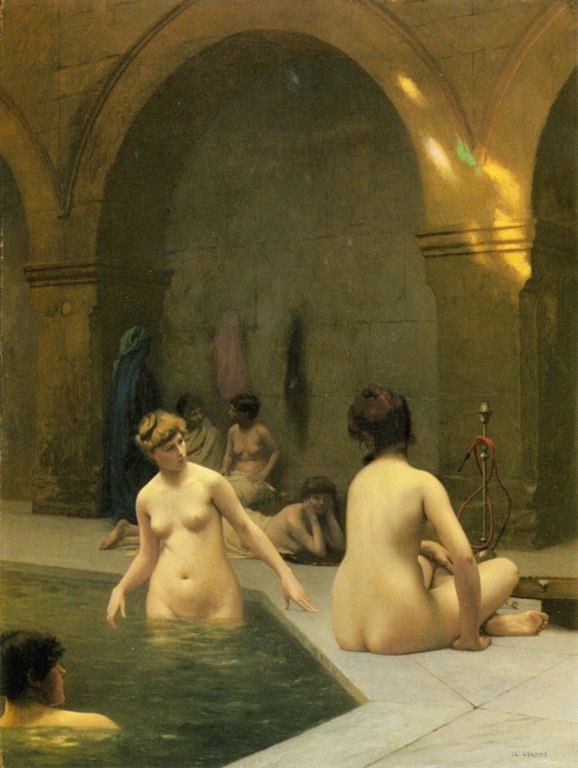
While aquaphobia is a relatively understandable phobia, grounded in our primal fear of drowning, there exist rare cases in which it can escalate to such a degree that individuals develop extreme anxiety around the simple act of bathing or showering. This condition is known as ablutophobia, and it can be seen as the opposite of obsessive-compulsive disorder (OCD), where a person feels compelled to constantly engage in acts of cleanliness. It can lead to a significant neglect of personal hygiene, manifesting in symptoms like breathlessness, nausea, and impaired cognitive function induced merely at the prospect—or even the thought—of bathing.
Ablutophobia can be triggered not only by inherent fears but also by traumatic experience or exposure to unsettling bath-related portrayals in media, like the infamous shower scene in Alfred Hitchcock’s Psycho. Conversely, at least in fiction, it can serve as a potent tool for creating tension and conflict. For example, in Elizabeth Meriwether’s play The Mistakes Madeline Made, the protagonist purposefully cultivates ablutophobia as a means to torment a germophobic, clean-freak office manager. “I want to torture her,” she says at one point. “I want to cover her in dirt.”
B is for blennophobia (fear of slime)

Blennophobia—also called myxophobia—is the overwhelming fear or strong aversion of slime. Often accompanied by symptoms such as intense anxiety and vomiting, the phobia appears to be rooted in primal instincts designed to protect humans against potential infections, caused by natural encounters with sticky, viscous substances like snail slime or fish gel.
Traumatic experiences involving slime or exposure to slimy scenes in movies (think The Blob, The Thing, Alien, Ghostbusters) can intensify this phobia, leading individuals to avoid not only snails and slugs but also bodily secretions like snot, phlegm, and saliva, particularly when someone has a cold. Even the mere mention of words like “phlegmatic”, “gooey” or “squelchy” can provoke anxiety attacks in those with severe blennophobia, making avoidance strategies essential for managing their anxiety and discomfort.
C is for consecotaleophobia (fear of chopsticks)
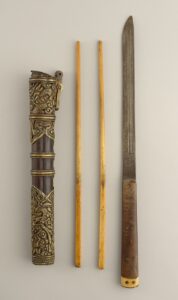
Consecotaleophobia—from the Latin conseco, meaning “to cut into pieces” or “chop up”—is the excessive fear of chopsticks. It is a type of specific phobia that can cause anxiety, panic, and avoidance of situations where chopsticks are present or expected to be used. People with consecotaleophobia may have had a traumatic experience with chopsticks in the past, such as choking, gagging, or injuring themselves or others. Alternatively, they may have learned to associate chopsticks with something negative or threatening, such as cultural differences, social pressure, or contamination.
Consecotaleophobia is one of quite a few weird phobias that start with the letter C. Some other examples are chirophobia (fear of hands), chaetophobia (fear of hair), chorophobia (fear of dancing), and chrometophobia (fear of money). Then there’s also something called cucurbitophobia, or the fear of pumpkins, which would have probably warranted a deeper exploration here had it not been somewhat challenging to confirm its existence, despite Andrew Thompson asserting it as “an unsurprisingly common phobia,” particularly within cultures that celebrate Halloween.
D is for deipnophobia (fear of dinner parties)
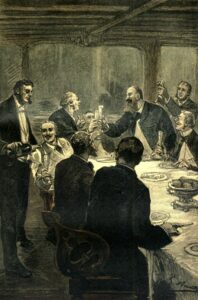
Deipnophobia is a type of social anxiety disorder that causes an irrational fear of dining out or engaging in dinner conversations. People with deipnophobia may experience symptoms such as panic attacks, nausea, dizziness, or avoidance behaviors when faced with the prospect of eating in public or with others. Deipnophobia is extremely debilitating and can severely affect one’s relationships, social life, and mental health—even going out on a date is а most daunting challenge for individuals struggling with this condition!
Deipnophobia is an exceptionally rare phobia, and it can be treated with psychotherapy, medication, or self-help strategies. Some possible causes of deipnophobia are genetic factors, environmental factors, past trauma, or social anxiety. Deipnophobia is one of many unusual phobias that start with the letter D, which include dendrophobia (fear of trees), didaskaleinophobia (fear of school), and dromophobia (fear of crossing streets). You know that old riddle-joke, “Why did the chicken cross the road?” Well, it most certainly didn’t—if you ask a dromophobe!
E is for eleutherophobia (fear of freedom)
Eleutherophobia is the persistent fear of freedom—something that may sound a bit paradoxical to some people. However, this phobia has a long history and can be traced back to the Bible, when the Israelites complained to Moses after escaping from Egypt: “What have you done to us by bringing us out of Egypt? Didn’t we say to you in Egypt, ‘Leave us alone; let us serve the Egyptians’? It would have been better for us to serve the Egyptians than to die in the desert.” (Exodus 14:11-12).

Among the most iconic contemporary instances of eleutherophobia, we find Charlie Chaplin’s Tramp in Modern Times and the revised Brooks in the cinematic rendition of Stephen King’s The Shawshank Redemption. Following long periods of incarceration, both characters struggle to navigate life beyond the prison walls, ultimately resorting to either recidivism or suicide. This struggle is a manifestation of “institutionalization,” a phenomenon characterized by the adaptation to a confined environment, rendering it challenging to reintegrate into conventional society.
Eleutherophobia is often associated with a sense of servitude, dependence, and lack of responsibility. It is the cherished dream of dictators and the haunting nightmare of revolutionaries. It is also not the only weird phobia that starts with the letter E. There is also ecclesiaphobia (fear of churches and clergypersons), eisoptrophobia (fear of mirrors), and—believe it or not—euphobia (fear of good news). Additionally, there’s ephebiphobia too, which pertains to the fear of teenagers and adolescents. For most parents, though, this might seem less like an irrational phobia and more like an indisputable fact—not to mention everyday reality!
F is for frigophobia (fear of cold)
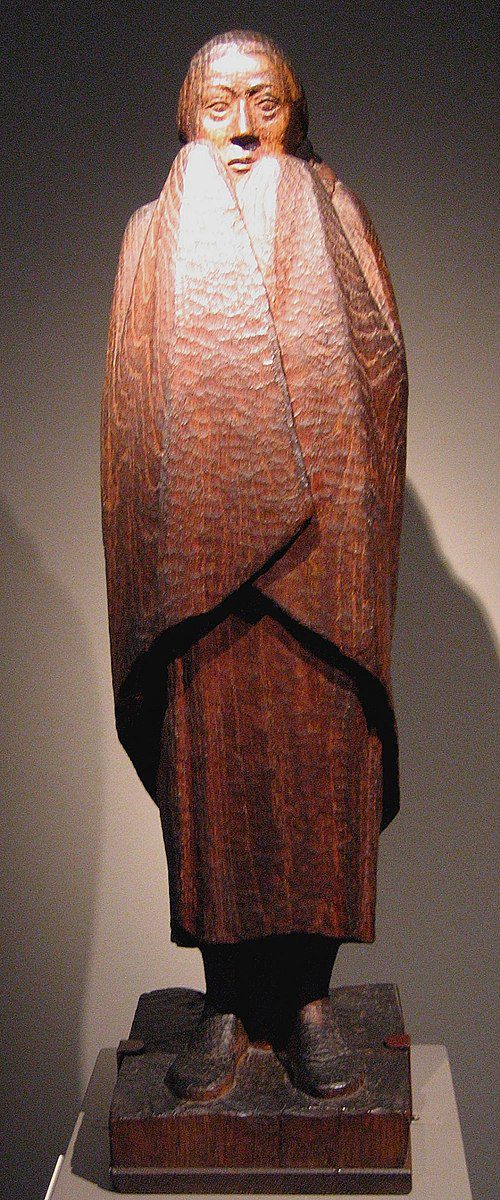
Frigophobia is generally a rare phobia that involves an irrational and intense fear of coldness or freezing; it is also known as cheimaphobia, cheimatophobia, cryophobia, and psychrophobia. People with frigophobia may experience extreme anxiety attacks when exposed to cold temperatures, cold food, or cold objects. They may also wear multiple layers of clothing even in summer, and avoid air conditioning, fans, or wind.
According to some sources, frigophobia is more prevalent in Chinese cultures, where it might be intricately related to the concept of yin and yang, as well as the culture-specific koro delusion. Yin represents the female element and is associated with coldness, while yang represents the male element and is associated with warmth. For Chinese men, frigophobia may sometimes arise from a belief that an excess of yin, and its inherent coldness, may cause their penis to retract inward—”like a frightened turtle,” in the memorable words of Jerry Seinfeld!
G is for geliophobia (fear of laughter)

“A cheerful heart is good medicine,” says Proverbs 17:22. Tell that to a geliophobe, that rarest of rare kinds for whom laughter was never a source of joy, but a trigger of paralyzing dread! The irrational fear of gaiety and laughter—either one’s own or that of others—geliophobia can cause severe anxiety, panic attacks, and inevitably leads to social isolation.
People with geliophobia may avoid situations where laughter is likely, such as parties, comedy shows, or even casual conversations. They may also feel uncomfortable around people who laugh easily or frequently. Some may even develop a fear of smiling or expressing happiness, as they associate it with laughter. Think a Scandinavian murder mystery, and you might get a sense of the emotional landscape experienced by those with geliophobia.
Geliophobia can severely affect one’s quality of life and mental health. Gallophobia not so much, unless you live in Paris that is, as that’s how the fear of all things French is scientifically referred to, particularly the French language and aspects of French culture. There’s also galeophobia, or “the irrational fear of sharks,” but anyone who thinks that can be irrational has probably never watched Jaws. Dun-dun. Dun-dun. Dun-dun dun-dun…
H is for hexakosioihexekontahexaphobia (fear of the number 666)
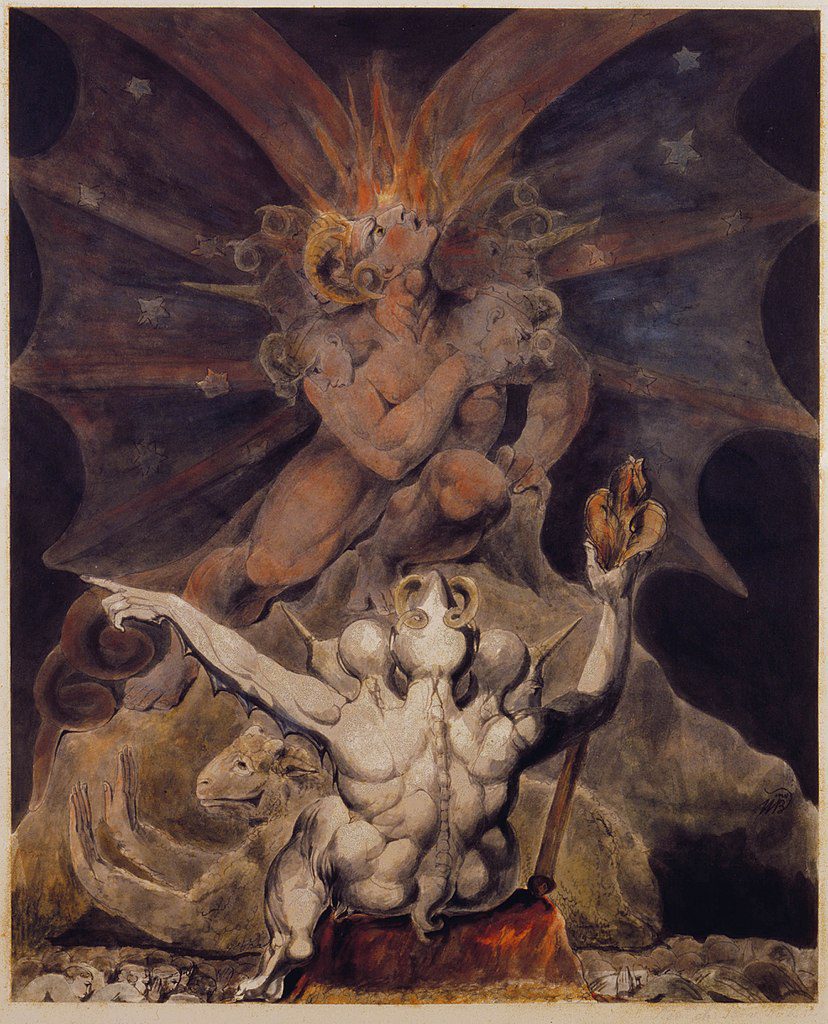
In the early summer of 2006, a pregnant woman by the name of Francesca Renouf was so deeply concerned about giving birth on June 6 that she proactively scheduled a doctor’s appointment to ensure she would not go into labor on that particular date. Her reason for this was nothing short of strange—she didn’t want to give birth to a… demon! And the reason for that? A deep-seated fear of the date’s number, 6/6/6, often referred to as the “number of the beast.”
The number of the beast is famously mentioned in Revelation 13:18; for centuries it has been widely recognized as the number of the Antichrist. As a result, some people may develop an irrational fear of this number, avoiding it at all costs and experiencing anxiety or panic when they encounter it; paradoxically, they may even try to find it in cryptic messages, even when it’s obviously not there. This is known as hexakosioihexekontahexaphobia, a word derived from the Greek numerals for 666.

Hexakosioihexekontahexaphobia can affect various aspects of a person’s life, such as their religious beliefs, their choices of products or services, their social interactions, and their daily routines. For example, a person with this phobia may refuse to use a phone number that contains 666, to travel on a highway with the route number 666, or to interact with anyone whose name has six letters in each of the first, middle, and last names. The extent of this fear can extend to something as significant as refusing to reside in a dwelling bearing the ominous number 666, as exemplified by the 1989 case of Nancy and Ronald Reagan, who petitioned the Government of Los Angeles to modify their residence number from 666 to 668 St. Cloud Road.
In a famous episode from Leo Tolstoy’s masterpiece, War and Peace, one of the central characters, Pyotr Bezukhov, delves into numerology and undertakes some rather amusing word-experiments to contend that Napoleon Bonaparte’s numeric identity is, in fact, 666, thus designating him as the Antichrist. Bezukhov subsequently arrives at a similar conclusion regarding his own name, when employing the French variant of his nationality: L’russe Besuhof. This peculiar revelation fuels a mysterious belief within him that he might be “connected with the great event foretold in the Apocalypse”—a certainty that he clings to unwaveringly. The episode serves as one of the most compelling fictional portrayals of how hexakosioihexekontahexaphobia can influence one’s thoughts and actions.
I is for ithyphallophobia (fear of erect penises)
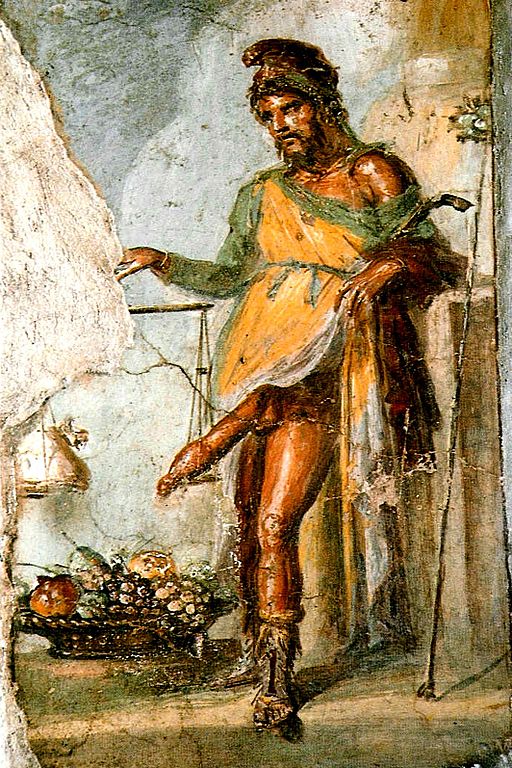
Ithyphallophobia is the irrational fear of erect penises. It is a specific phobia—subset of phallophobia—that can cause significant distress and impairment in one’s life. People with ithyphallophobia may experience panic attacks, nausea, sweating, trembling, or fainting when confronted with the sight or thought of an erect penis. The condition can affect both men and women, although it is more common among the latter.
The causes of ithyphallophobia are not fully understood, but some possible factors include trauma, sexual abuse, negative sexual experiences, religious beliefs, or cultural norms. Freud suggested that the phobia could be related to castration anxiety, a fear of losing one’s own penis or being emasculated by a powerful female figure—but this theory has been criticized for being sexist and outdated.
K is for koumpounophobia (fear of buttons)
Koumpounophobia is the term used to describe the phobia of buttons, mostly affixed to clothes but standalone too. This phobia regularly leads to feelings of fear and disgust when sufferers are exposed to buttons, either visually or physically. The aversion often stems from past experiences, such as incidents involving button-related choking or negative interactions with individuals donning clothing adorned with noticeable or unique buttons.
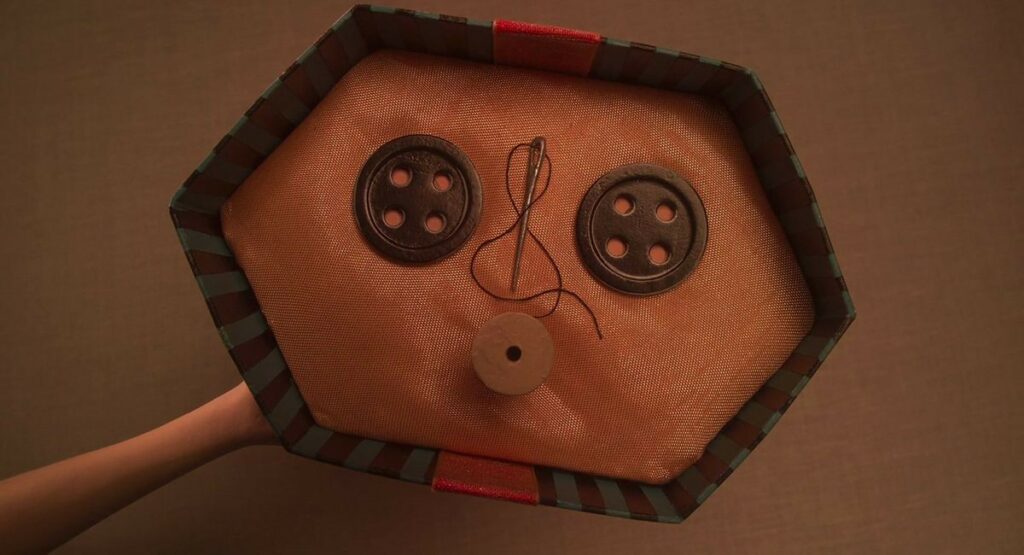
Steve Jobs, the co-founder of Apple Inc., was a well-known koumpounophobe, displaying a strong dislike for buttons on computer hardware and consistently opting for turtleneck shirts instead of buttoned shirts. The horror novel Coraline by Neil Gaiman cleverly incorporated this fear by featuring characters with buttons in lieu of eyes. Prior to the release of its 2009 film adaptation, a promotional teaser trailer was created in which Gaiman introduced the concept of koumpounophobia to the audience, while cautioning those who shared this fear about the content of the film.
L is for linonophobia (fear of strings)
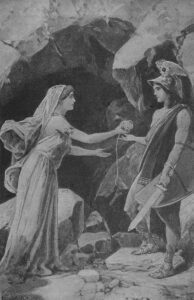
Speaking of textiles, linonophobia is an unusual fear related to strings or threads. Individuals afflicted by linonophobia tend to steer clear of situations that involve strings or threads, like sewing, knitting, or even playing with toys that feature these elements. Additionally, they may harbor irrational beliefs about strings or threads, perceiving them as potential sources of harm, entrapment, or even asphyxiation.
Needless to add, linonophobia can have a significant impact on an individual’s daily life, hindering their social interactions and professional pursuits. While we may not be aware of any famous linonophobes, we can certainly rule out the Greek hero Theseus as one. Otherwise, he would have probably found himself in quite the predicament when navigating the Minotaur’s Labyrinth with Ariadne’s trusty ball of thread!
M is for melophobia (fear of music)
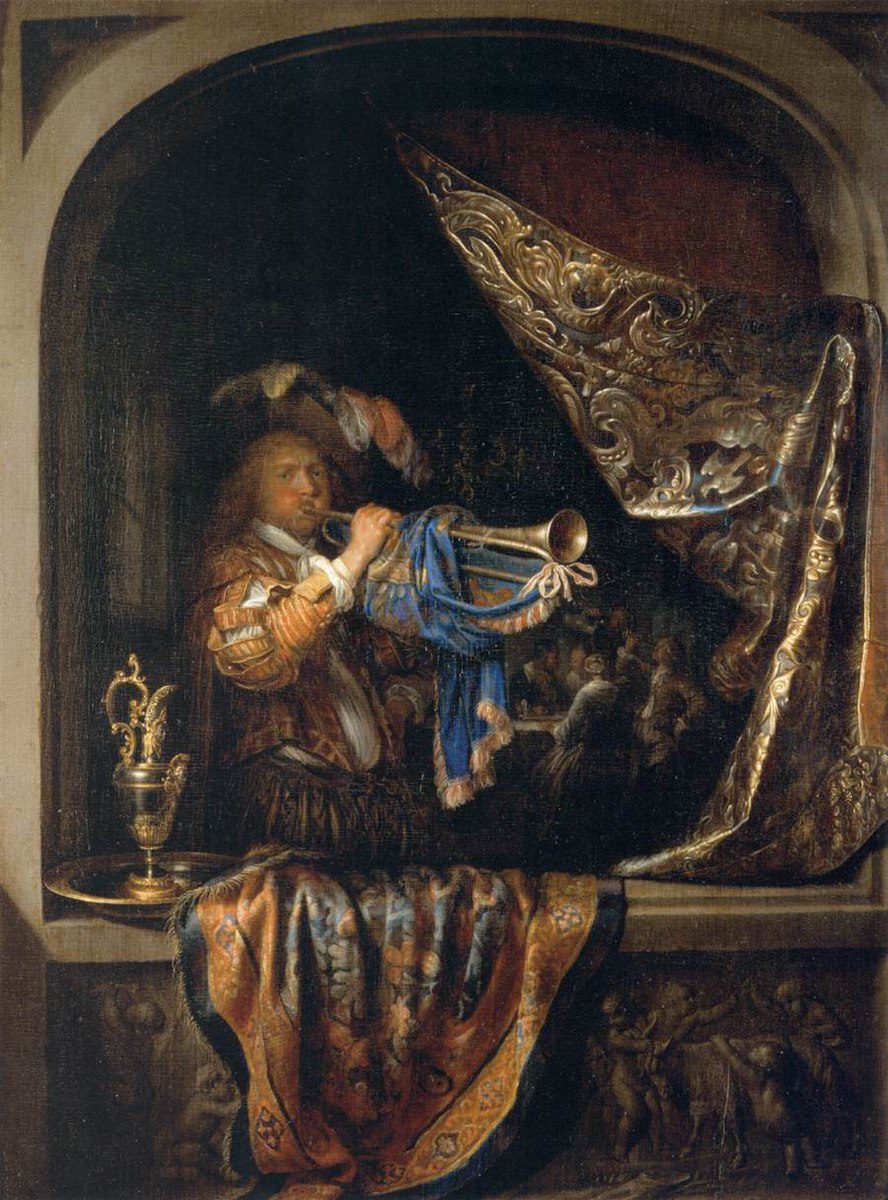
Melophobia, the irrational fear of music, encompasses a range of manifestations, with some individuals despising various musical genres, and others harboring deep-seated aversions towards specific instruments or musical styles. An illustrative historical account of melophobia can be found in the life of none other than the most renowned musician of them all, Wolfgang Amadeus Mozart. As narrated by trumpeter Johann Andreas Schachtner, a close friend of Mozart’s father:
Until he was almost nine he was terribly afraid of he trumpet when it was blown alone, without other music. Merely to hold a trumpet in front of him was like aiming a loaded pistol at his heart […] Papa wanted me to cure him of this childish fear and once told me to blow [the trumpet] at him despite his reluctance, but my God! I should have not been persuaded to do it; Wolfgang scarcely heard the blaring sound when he grew pale and began to collapse, and if I had continued he would surely have suffered a convulsion.
Melophobia is just one among the various weird phobias that share the initial letter M. We’ve already covered megalophobia, the fear of large objects. Metrophobia is arguably much weirder—it is the fear of poetry. People with metrophobia may find poems confusing, boring, or threatening, and may avoid reading or writing them. By that description, almost everyone is a metrophobe nowadays! Just as well, most people seem to grapple with mageirocophobia too, which is the fear of cooking. Fearful about being judged by their culinary skills, mageirocophobes rely on ready-made meals, takeout, or other people to cook for them. In the realm of phobias, it’s hard to deny that this one comes with a certain degree of convenience.
N is for nomatophobia (fear of names)

“Sticks and stones,” says the schoolboy’s rhyme, “may break my bones, but names shall never hurt me.” Not true if you are a nomatophobe. Nomatophobia is the fear of names, and it can cause severe anxiety and distress for those who suffer from it. Nomatophobes may avoid reading, writing, speaking, or even listening to certain names that trigger their phobia. They may also experience panic attacks, sweating, trembling, nausea, or difficulty breathing when confronted with their feared words or names.
According to Facts on File’s Encyclopedia of Phobias, Fears and Anxieties, nomatophobia “may have developed from a primitive time when men guarded their first name as a precious secret and assumed another name to mislead those who might be able to gain power over them by knowing one’s first name.” Indeed, some cultures and religions still attach great importance to the meaning and power of names, and may have rituals or rules for naming their children or themselves.
Nominative determinism, the hypothesis that people tend to gravitate toward areas of work that fit their names, is another possible factor that may explain nomatophobia. The Romans believed that nomen est omen—i.e. that our names foreshadow our destiny—and instinctively, most people still find the correlation intriguing or, at least, amusing. For nomatophobes, however, this may create a sense of pressure or insecurity about living up to their names or finding their true identity. They may fear that their names will limit their choices, affect their personality, or determine their fate. They may also dread being ridiculed, judged, or stereotyped because of their names.
Nomatophobia is not the only weird phobia that starts with the letter N. There are also other uncommon and specific fears, such as nephophobia (the fear of clouds) and nomophobia (the fear of not having a mobile phone). The latter, however, is more often considered a form of behavioral addiction—which, arguably, only makes it worse.
O is for omphalophobia (fear of belly buttons)
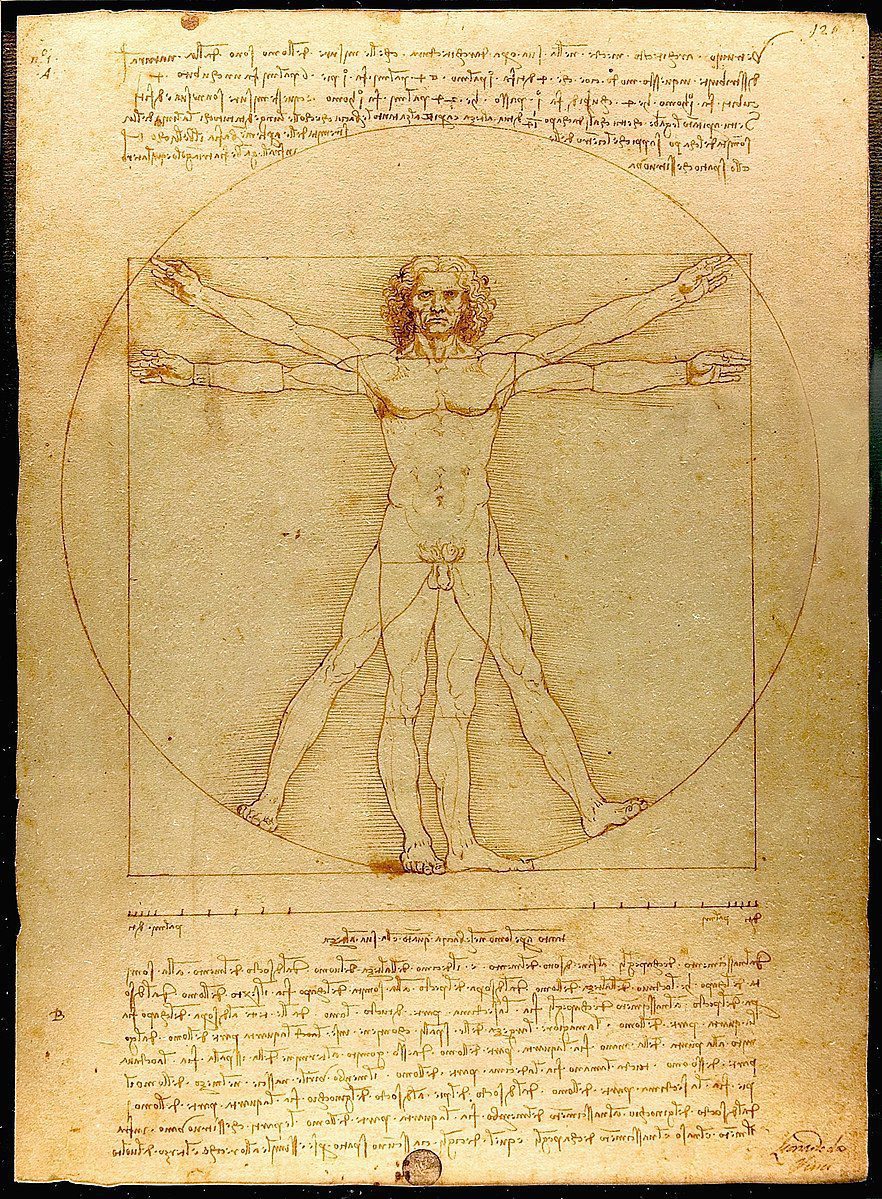
Omphalophobia, koumpounophobia’s distant cousin, is the fear of belly buttons. It is a rare but primal phobia, related to the fear of mother-child separation, since the belly button is a reminder of the umbilical cord. People with omphalophobia may feel anxious or disgusted by their own or other people’s navels. They may also avoid touching, cleaning or even looking at them. Some people may even fear that their belly button will come undone and their guts will spill out; Khloé Kardashian is, famously, one of them.
Optophobia, the fear of opening one’s eyes, is another extremely weird O-phobia. It can be caused by a traumatic incident involving sight or eyes (such as an eye injury) or seeing something disturbing (such as the notoriously nightmarish eyeball-cutting scene from Un Chien Andalou). People with optophobia may keep their eyes closed for long periods of time or wear sunglasses indoors. They may also experience panic attacks, nausea, dizziness, or headaches when they open their eyes or are forced to do so. In their defense, the world can be such a scary place sometimes.
P is for phobophobia (fear of developing a phobia)
In a memorable episode of British comedy panel quiz show Would I Lie to You?, Irish comedian David O’Doherty claimed that he was seeing a hypnotist to cure him of his compulsion to visit hypnotists. Being a phobophobe works in a similarly mindboggling way. A person who suffers from phobophobia, or the fear of fear itself, may develop anxiety about experiencing any kind of phobia. This can lead to a vicious cycle of avoiding all kinds of situations that might trigger a panic attack, which in turn reinforces the fear of fear.
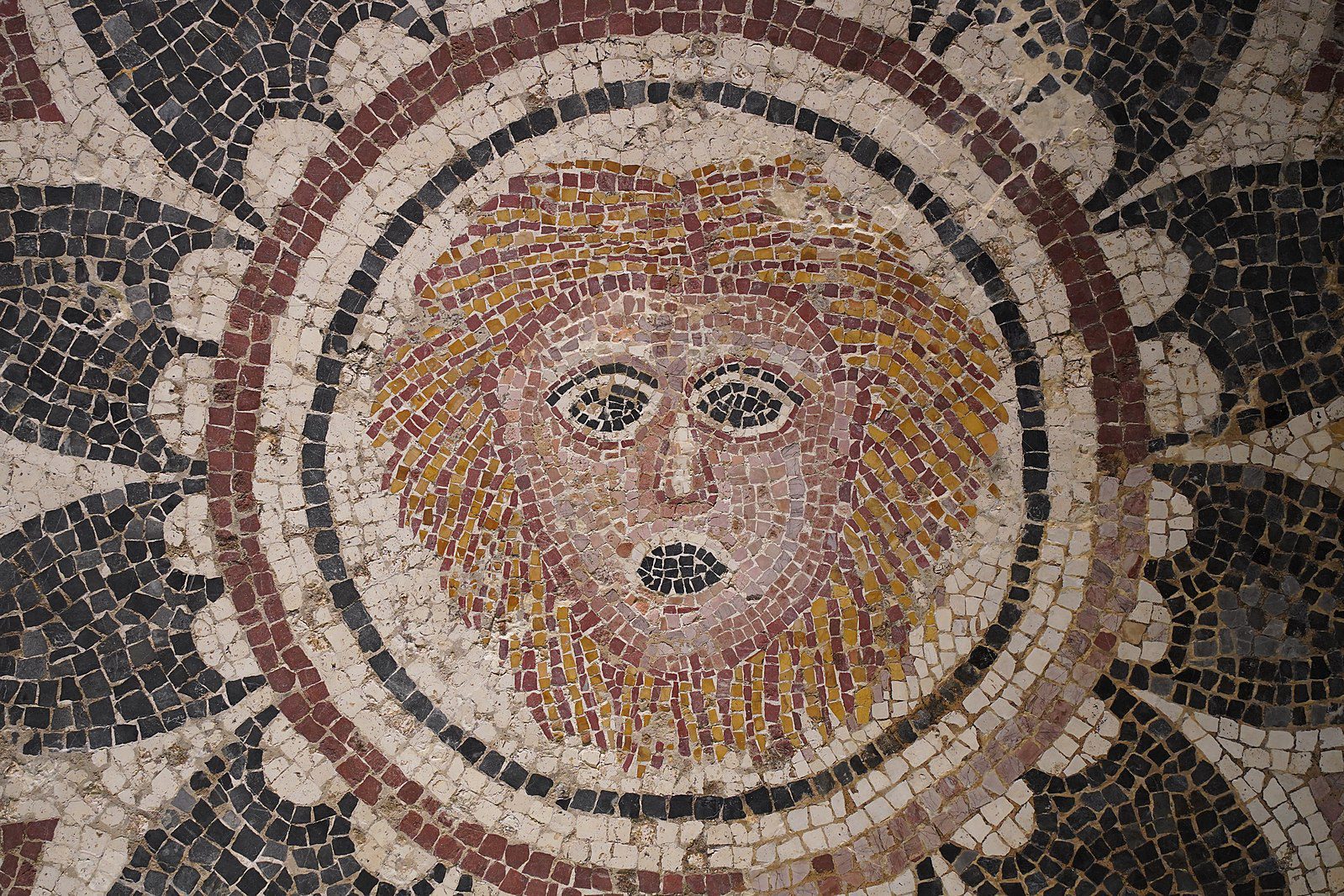
Phobophobia may be the most insidious of all phobias, as it inevitably leads to a self-perpetuating cycle of anxiety and avoidance. It’s not just that the more one fears developing a phobia, the more likely they are to exhibit symptoms of one; it’s also that phobophobia may eventually evolve into a state of free-floating anxiety the psychologists of the 19th century referred to as panphobia, i.e. “the fear of everything.” Indeed, being afraid of that one unknown is not that different from being afraid of everything known.
In view of this, papyrophobia, or the fear of paper, seems rather ordinary. Actress Megan Fox is known to suffer from it, confessing her inability to touch anything other than laminated pages. Then there’s also pogonophobia, or the fear of beards. People with this condition may feel anxious or disgusted around bearded men, even if they happen to be Santa Claus—–as Little Albert found out to his detriment in an ill-fated, never-to-be-repeated classical conditioning experiment of the 1920s.
Finally, philophobia may be the most poignant of all phobias: it is the fear of love and falling in love. It is believed that England’s Queen Elizabeth I, who never married, was a philophobe, owing to her mother, Anne Boleyn, being executed by order of her father Henry VIII. Then again, she can “probably be forgiven for believing that romantic relationships end in tragedy,” as humorously noted by Andrew Thompson.
R is for rhytophobia (fear of wrinkles)
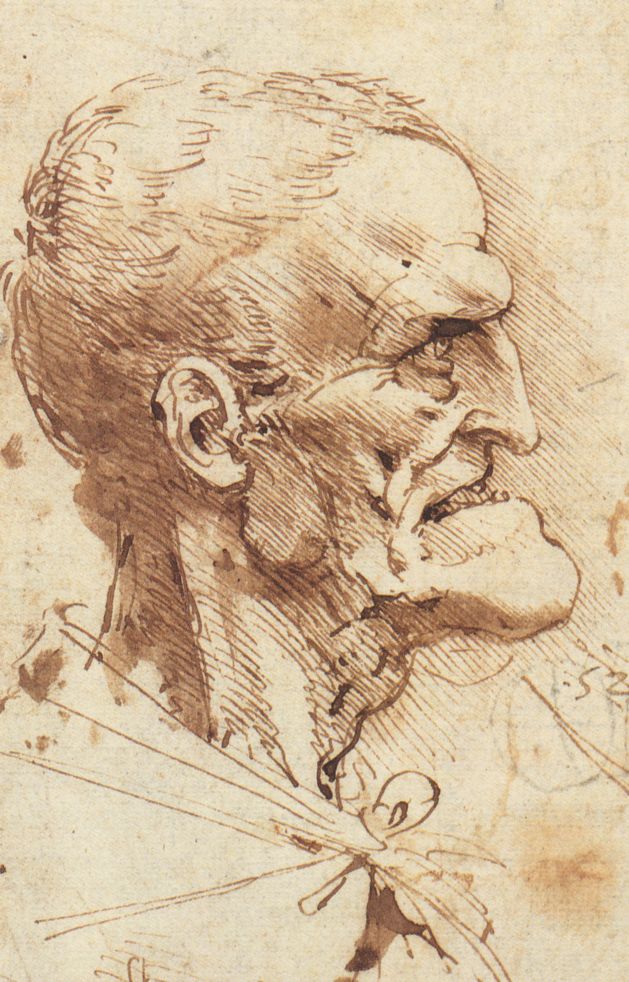
Rhytiphobia is the irrational fear of wrinkles—or more precisely, getting them. It can affect people of any age, but it is more common among women who are approaching (or experiencing) old age. People with rhytiphobia may obsess over their appearance, avoid mirrors or photos, use excessive amounts of cosmetics or anti-aging products, or even seek cosmetic surgery to smooth out their wrinkles.
Rhytiphobia can cause significant distress and impairment in one’s daily life, as well as social isolation, anxiety, depression, and low self-esteem. There are many reasons to believe that it’s yet another culturally-bound modern-age phobia, akin to nomophobia. After all, for centuries wrinkles were seen as indicators of wisdom or a life well-lived, a perspective that still holds in certain cultures—albeit more commonly among men.
S is for sinistrophobia (fear of left-handedness)
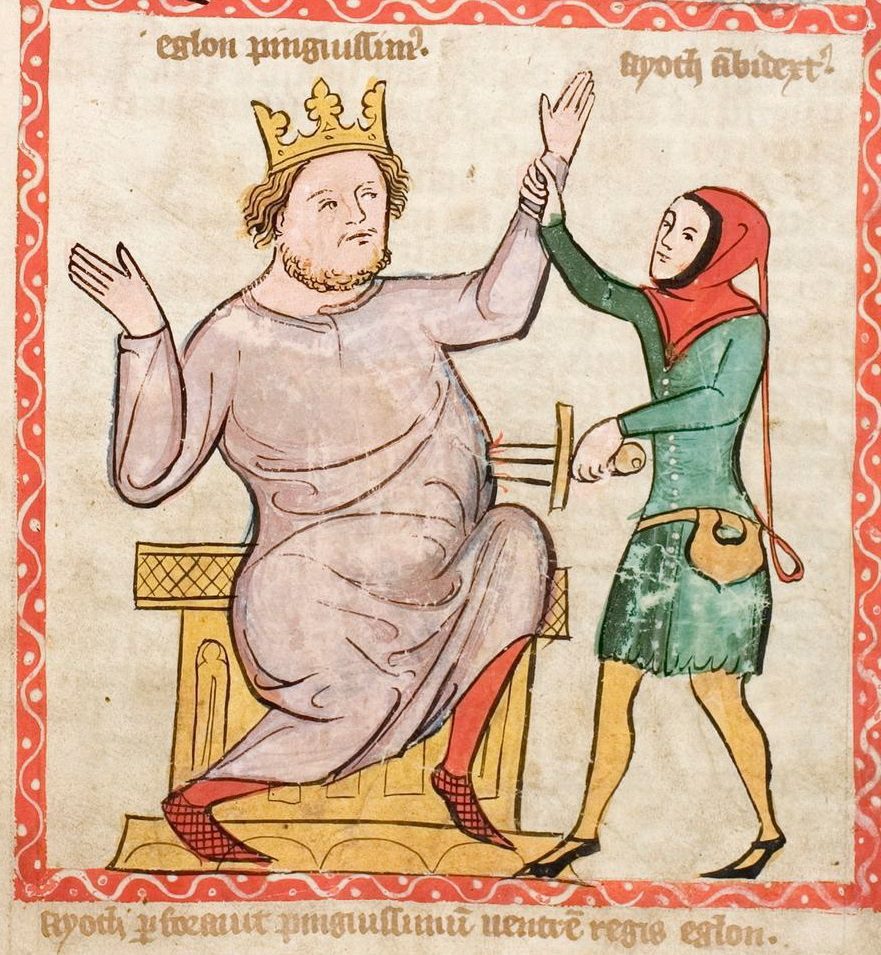
Zoolander is renowned for his iconic signature stare, his unforgettable Magnum and Blue Steel poses, and, of course, his comical inability to turn left. While he humorously claims to be a non-ambiturner, some might argue that he’s actually afflicted by some fictional form of sinistrophobia—an irrational fear of all things left or left-handed.
Individuals grappling with sinistrophobia may find themselves overwhelmed by feelings of panic, queasiness, profuse sweating, or an irregular heartbeat upon encountering something situated on the left side of their body or interacting with a left-handed individual.
While sinistrophobia may stem from past traumatic events, its roots delve even deeper into history, as left-handed people have often been associated with ill fortune or even malevolence throughout the ages. In fact, the very word “sinister” finds its origins in the Latin word for left, shedding some light on the origins of this phobia’s name.
T is for taphophobia (fear of being buried alive)
“To be buried alive is, beyond question, the most terrific of [the] extremes which have ever fallen to the lot of mere mortality,” says the unnamed first-person narrator in Edgar Allan Poe‘s short story, “The Premature Burial.” It must have been: back in the 19th century, medicine wasn’t advanced enough to distinguish between certain medical conditions and actual death, leading to many cases of people being buried alive. The fear—for it’s difficult to call it a phobia—even birthed a peculiar market demand, leading to the creation of safety coffins.
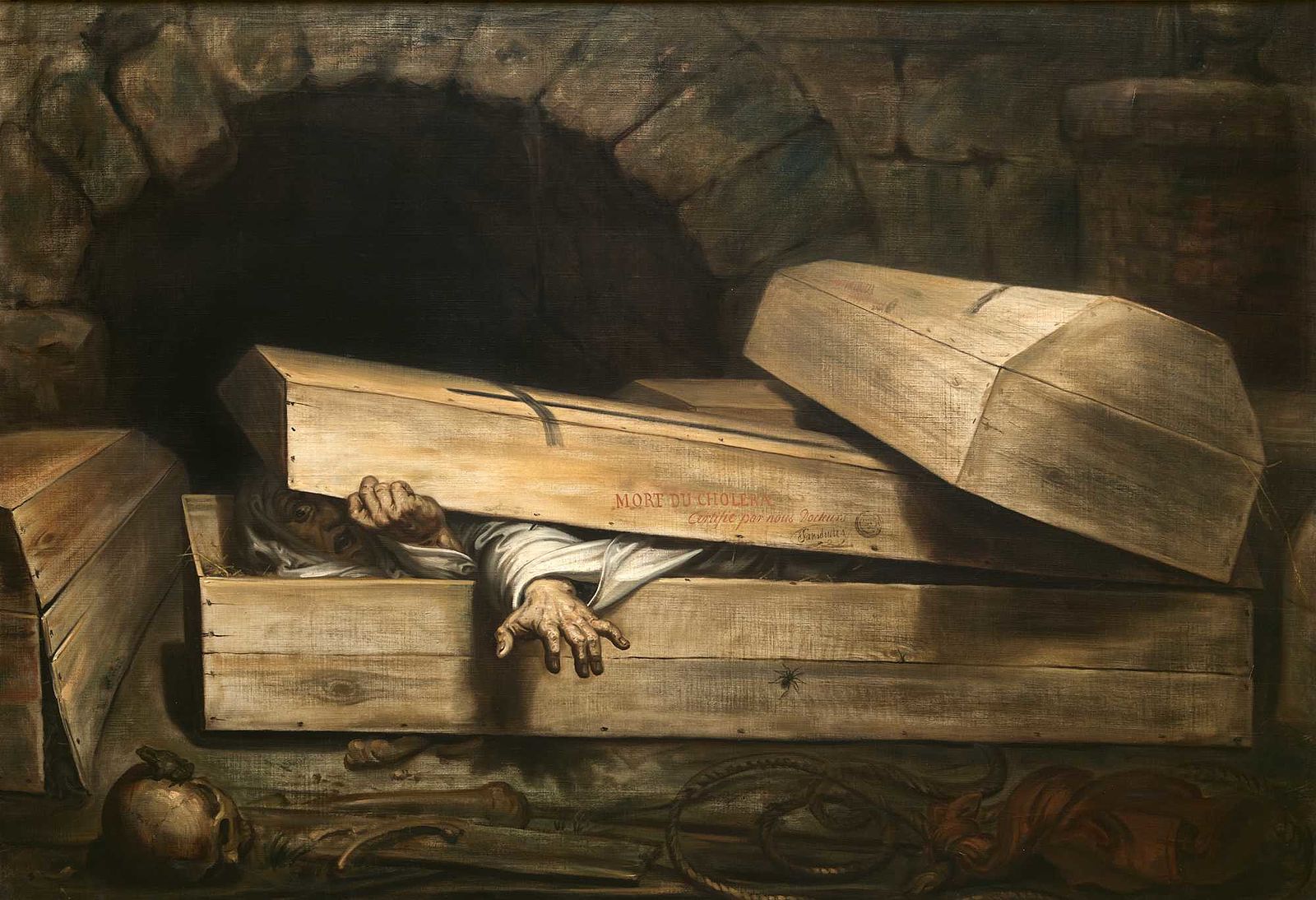
Even in the face of such safeguards, Hans Christian Andersen remained gripped by an unshakable fear of being prematurely buried. Distrustful of foreign doctors, whenever he traveled, he supposedly carried a card with him that said, “I am not really dead.” Shortly before he was, in 1875, he asked a friend to make sure his arteries were cut open before his burial. Frédéric Chopin asked for something “The earth is suffocating,” says his last written note. “Swear to make them cut me open, so that I won’t be buried alive.”
On his deathbed, George Washington, perhaps the most famous taphophobe of all, asked to be buried decently and not placed in “the Vault” until three days after his death. Nikolai Gogol, supposedly asked for something similar, but there’s a legend that his body had moved when it was found, after the cemetery where he was buried was demolished. Maybe his worst fear came true. Or maybe, just maybe, the story is more interesting that way.
U is for uranophobia (fear of heaven)
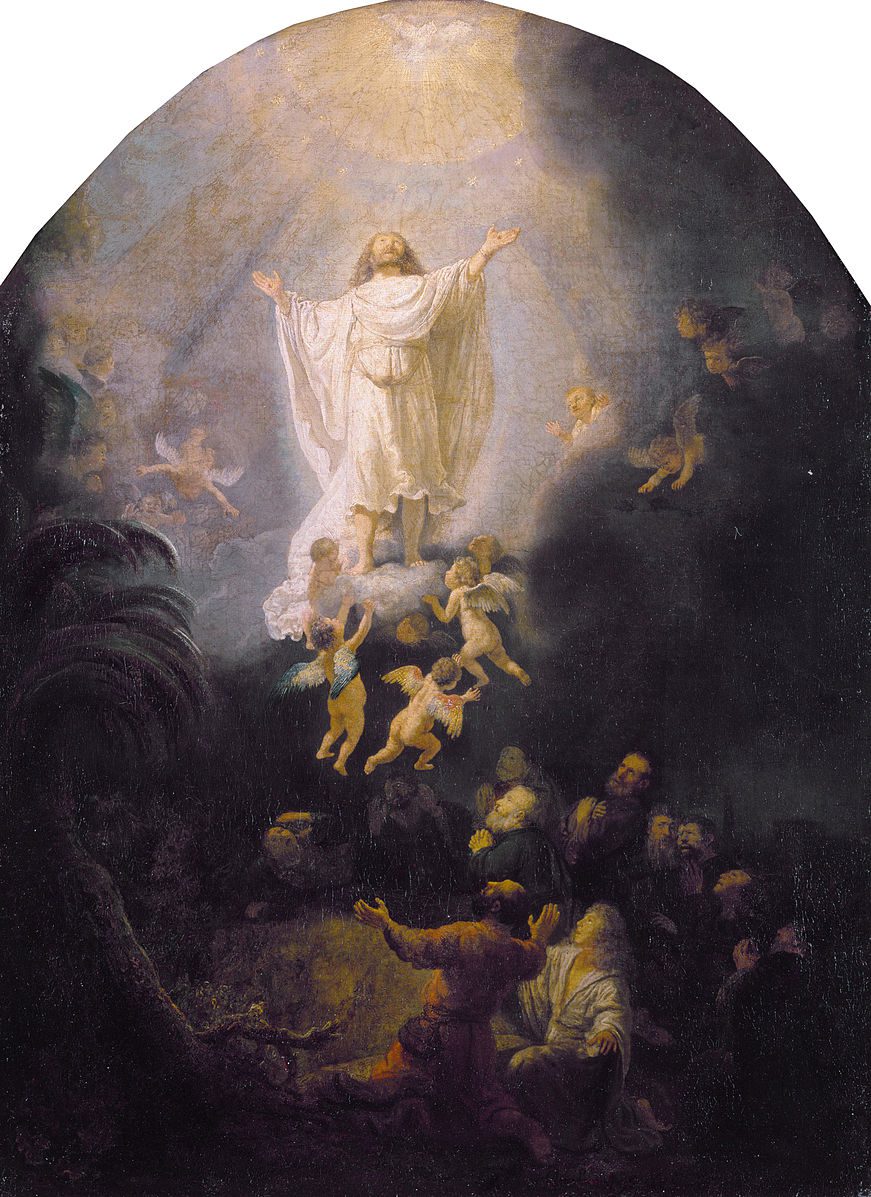
Uranophobia—sometimes referred to as ouranophobia—derives its name from the Greek word (o)uranos, meaning “heaven.” This phobia is characterized by an irrational fear of heaven or the sky, a relatively uncommon yet distressing condition that can trigger anxiety and panic attacks at the very thought of ascension. So, whereas taphophobes are afraid of being buried alive, uranophobes are afraid of entering heaven alive. Nowhere to turn.
Uranophobia is closely intertwined with several related phobias (all of which, incidentally, begin with the letter “a”), such as anablephobia (fear of looking upward), apeirophobia (fear of infinity) and angelophobia (fear of angels). Additional root causes may revolve around concerns regarding one’s worthiness for paradise or apprehensions concerning an encounter with their Creator.
Either way, to quote Andrew Thompson, “Uranophobia must be a potent fear, especially given that the alternative to heaven involves fire, burning, heat, and a lot of other nasty stuff.”
V is for vestiphobia (fear of clothing)

Whereas it’s easy to understand someone who suffers from veloxrotaphobia—why shouldn’t you be terrified by roller coasters?—what’s easy in the case of vestiphobes is recognizing the sufferers: they are the ones who consistently refrain from wearing any clothing.
Vestiphobia, or the fear of clothes, can stem from a variety of underlying causes. Some people may develop it due to allergies to specific fabrics or chemicals, which can result in discomfort or itching when they put on clothes. Others may grapple with an extreme form of claustrophobia, leading them to feel trapped or suffocated by garments. Yet, for some, the association between a specific type of clothing and a certain traumatic event of their lives may be the primary trigger. Think a soldier’s uniform reigniting PTSD symptoms, or a victim’s attire reminding them of past abuse.
One particularly famous historical figure who battled vestiphobia—one of the many things he battled with—was 18th-century Korean Crown Prince Sado. The effects of his vestiphobia were vividly chronicled by his wife, Lady Hyegyeong, in her Memoirs, which contain perhaps the earliest description of this (in her words) “strange and mysterious affliction”:
For him to get dressed, I had to have ten, twenty, or even thirty sets of clothes laid out. He would then burn some, supposedly on behalf of some ghost or other. Even after this, if he managed to get into a suit of clothes without incident, one had to count it as great good luck. If, however, those serving him were to make the slightest error, he would not be able to put his clothes on, no matter how hard he tried. In the process, people were hurt, even killed. It was truly dreadful.
X is for xocolatophobia (fear of chocolate)
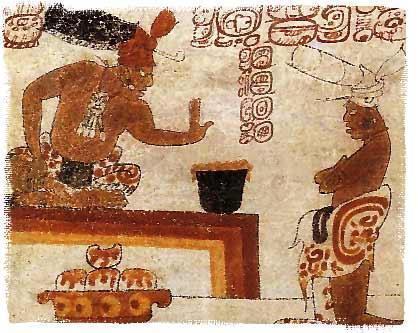
Back in 2015, Express shared the story of Andrew Bollock, a TV producer from Maidenhead, Berkshire, who suffers from something referred to as xocolatophobia. First of all, the name is strange. It’s a tradition, after all, when naming phobias to use Ancient Greek words for what’s feared. Chocolate, however, doesn’t have an Ancient Greek translation, as it didn’t exist back then. Hence, the Nahuatl source is used instead.
The origins of Andrew Bollock’s fear, however, aren’t that apparent—unless we’re talking about something genetic here. “I can’t think of any specific incident which left me traumatized about chocolate. My mother has the same problem, so I got it from her,” he said for Express. While one might speculate about connections to OCD or verminophobia, Bollock clarified, “I’m not a cleanliness freak: If I get anything else mucky on me I feel fine. Only chocolate stresses me out.” And here’s how this peculiar fear manifests:
I see someone else eating it I start to feel worried about the chocolate getting on me. If I see someone with a chocolate bar I will make a conscious effort to avoid coming into contact with them. When I go out for dinner and someone has a big chocolate thing for dessert it freaks me out and I feel stressed. I don’t let anyone bring it in my car or my house, but in a public place I can’t expect people to not eat chocolate around me.”
By the way, in case you were wondering, the scariest of all chocolates is Cadbury Flake—”because it crumbles easily.”
Z is for zelophobia (fear of jealousy)
Zelophobia, the irrational fear of jealousy, can lead to explosive outbursts of agitation when individuals encounter jealousy-inducing situations. The fear often causes people to avoid romantic relationships altogether, and even suppress their most intimate feelings of love due to their apprehension about jealousy.
As a result, zelophobia can negatively impact one’s social life and mental health, potentially resulting in isolation or even angry and aggressive behavior—ironically mirroring the actions of an overly jealous person. Strict religious upbringings are frequently associated with this condition; abusive adult relationships even more so.

Adding to the list: a few more weirder, funnier, and (possibly) made-up phobias
Determining whether a phobia is genuine or simply a whimsical combination of Ancient Greek words can be a tricky task. Phobias are, after all, inherently irrational, so any object or situation can theoretically trigger anxiety and fear. Moreover, when someone claims to have a fear of something, it’s generally best to believe them, as phobias are just as unpredictable and weird as dreams, as Gregory P. Korgeski explains in The Complete Idiot’s Guide to Phobias.
That said, the following few phobias seem just too absurd to be believed. In fact, some we know are made up, as we can trace their source; the names of others often give them away. Nevertheless, it wouldn’t be surprising if some of these seemingly unbelievable phobias gain medical recognition over time; in fact, perhaps some already have.
- Aibohphobia: Fear of palindromes. Ironically, the name is a palindrome itself. Stan Kelly-Bootle coined this word for The Devil’s DP Dictionary (updated as The Computer Contradictionary in 1995), his 1981 Bierciean compilation of witty, wordplay-heavy, brain-teasing computer-related terms and concepts.
- Anachrophobia: Fear of temporal displacement. Made its initial appearance as the title of a Doctor Who spin-off novel by Jonathan Morris, published by BBC Books in 2002. Perhaps the phobia will make more sense in the future, when time travel becomes a reality. Then again, maybe it already does… somewhere in the past. (Get it?)
 Anatidaephobia: Fear that a duck is watching you. Originally from a Gary Larson Far Side cartoon, the phobia has inspired more than a few Reddit confessions. None of them look serious, but then again neither was Larson when he invented the word “thagomizer“—you can find it in scientific dictionaries today. So…
Anatidaephobia: Fear that a duck is watching you. Originally from a Gary Larson Far Side cartoon, the phobia has inspired more than a few Reddit confessions. None of them look serious, but then again neither was Larson when he invented the word “thagomizer“—you can find it in scientific dictionaries today. So…- Arachibutyrophobia: Fear of peanut butter sticking to the roof of your mouth. Commonly attributed to a May 19, 1982 Peanuts strip by Charles Schulz, the true origin of the word is actually a list of phobias found in the 1975 edition of The People’s Almanac, the truthfulness of which has never been verified. We’ve all been there, though, and it’s not pleasant.
 Cenosillicaphobia: Fear of empty (beer) bottles. Andrew Thompson lists this one as an existing phobia in Spiders, Clowns, and Great Mole Rats, claiming that “the cenosillicaphobe goes to extreme lengths to avoid refill lag time, sitting as close to the bar as possible and giving large tips to the bartender to ensure vigilance is maintained.” He’s got to be joking… right?
Cenosillicaphobia: Fear of empty (beer) bottles. Andrew Thompson lists this one as an existing phobia in Spiders, Clowns, and Great Mole Rats, claiming that “the cenosillicaphobe goes to extreme lengths to avoid refill lag time, sitting as close to the bar as possible and giving large tips to the bartender to ensure vigilance is maintained.” He’s got to be joking… right?- Friendorphobia: Fear of being asked, “Who goes there, friend or foe?”. Listed by Sara Latta under joke phobias. She suggests this phobia be filed under “existentially traumatic wordplay.” Concurred.
 Hippopotomonstrosesquipedaliophobia: Fear of long words. The etymology of this one, to quote Korgesky, is “clear as river mud.” It combines three unrelated Greek terms, two of which are compounds themselves: hippopoto- (“river horse”), monstros (“evil omen”) and sesquipedal, “a foot and a half long (word).” Must be a sheer nightmare for spelling bee contestants! Come to think of it, it’s probably safe to say they might be the ones most likely to have the phobia in the first place.
Hippopotomonstrosesquipedaliophobia: Fear of long words. The etymology of this one, to quote Korgesky, is “clear as river mud.” It combines three unrelated Greek terms, two of which are compounds themselves: hippopoto- (“river horse”), monstros (“evil omen”) and sesquipedal, “a foot and a half long (word).” Must be a sheer nightmare for spelling bee contestants! Come to think of it, it’s probably safe to say they might be the ones most likely to have the phobia in the first place.- Keanuphobia: Fear of Keanu Reeves. Invented and described by Dean Koontz in his novel False Memory. It’s jocular because it’s Reeves; perhaps, if the object were another actor, things would have been a lot different. Imagine, for instance, if it were Lawrence Tierney—it would have be challenging to take tierneyphobia lightly. Just ask Tarantino. Or the cast of Seinfeld. Or most anyone, really.
 Luposlipaphobia: The fear of being pursued by timber wolves around a kitchen table while wearing socks on a newly waxed floor. A highly specific phobia—and not one bit irrational. Credit for both the word and the description (once again) go to Gary Larson.
Luposlipaphobia: The fear of being pursued by timber wolves around a kitchen table while wearing socks on a newly waxed floor. A highly specific phobia—and not one bit irrational. Credit for both the word and the description (once again) go to Gary Larson.- Trypophobia: The fear of irregular hole patterns, like those seen in honeycombs, seedpods, the human skin, or aerated chocolate. The term likely originated in a 2005 post on a now-defunct forum and quickly gained widespread attention. This resulted in a Facebook group, a dedicated website, and quite a few informative YouTube videos. Initially, attempts to create a Wikipedia article failed due to a lack of reliable sources. Nevertheless, today, there is a comprehensive Wikipedia page dedicated to trypophobia, surpassing the length of most phobia articles out there.
 Venustraphobia: Fear of beautiful women. Listed by BBC News in an 1998 article similar to this one, titled “The A-Z of Fear.” Most of the phobias on the list are real; this one most certainly is not. Even the name is off: it has Latin rather than Ancient Greek roots; even then, it should have been venusophobia, shouldn’t it? The word “trap” has no place in it. That is, unless the intended meaning was “fear of being ensnared by a beautiful woman.” Or a flesh-eating plant—a phobia that might be quite common among insects!
Venustraphobia: Fear of beautiful women. Listed by BBC News in an 1998 article similar to this one, titled “The A-Z of Fear.” Most of the phobias on the list are real; this one most certainly is not. Even the name is off: it has Latin rather than Ancient Greek roots; even then, it should have been venusophobia, shouldn’t it? The word “trap” has no place in it. That is, unless the intended meaning was “fear of being ensnared by a beautiful woman.” Or a flesh-eating plant—a phobia that might be quite common among insects!- Zemmiphobia: Fear of great mole rats. Such creatures (fortunately) don’t exist in the real world—only in urban legends. Naked mole rats, on the other hand, are quite real—and not one bit handsomer.
- Triskaidekaphobia. Fear of the number 13. Never mind the section, never mind the alphabet—this one belongs here. Consider it a staged, credits-roll jump scare.


 Anatidaephobia: Fear that a duck is watching you.
Anatidaephobia: Fear that a duck is watching you.  Cenosillicaphobia: Fear of empty (beer) bottles. Andrew Thompson lists this one as an existing phobia in Spiders, Clowns, and Great Mole Rats, claiming that “the cenosillicaphobe goes to extreme lengths to avoid refill lag time, sitting as close to the bar as possible and giving large tips to the bartender to ensure vigilance is maintained.”
Cenosillicaphobia: Fear of empty (beer) bottles. Andrew Thompson lists this one as an existing phobia in Spiders, Clowns, and Great Mole Rats, claiming that “the cenosillicaphobe goes to extreme lengths to avoid refill lag time, sitting as close to the bar as possible and giving large tips to the bartender to ensure vigilance is maintained.”  Hippopotomonstrosesquipedaliophobia: Fear of long words. The etymology of this one, to quote Korgesky, is “clear as river mud.” It combines three unrelated Greek terms, two of which are compounds themselves: hippopoto- (“river horse”), monstros (“evil omen”) and sesquipedal, “a foot and a half long (word).” Must be a sheer nightmare for spelling bee contestants! Come to think of it, it’s probably safe to say they might be the ones most likely to have the phobia in the first place.
Hippopotomonstrosesquipedaliophobia: Fear of long words. The etymology of this one, to quote Korgesky, is “clear as river mud.” It combines three unrelated Greek terms, two of which are compounds themselves: hippopoto- (“river horse”), monstros (“evil omen”) and sesquipedal, “a foot and a half long (word).” Must be a sheer nightmare for spelling bee contestants! Come to think of it, it’s probably safe to say they might be the ones most likely to have the phobia in the first place. Luposlipaphobia: The fear of being pursued by timber wolves around a kitchen table while wearing socks on a newly waxed floor. A highly specific phobia—and not one bit irrational.
Luposlipaphobia: The fear of being pursued by timber wolves around a kitchen table while wearing socks on a newly waxed floor. A highly specific phobia—and not one bit irrational.  Venustraphobia: Fear of beautiful women.
Venustraphobia: Fear of beautiful women. 